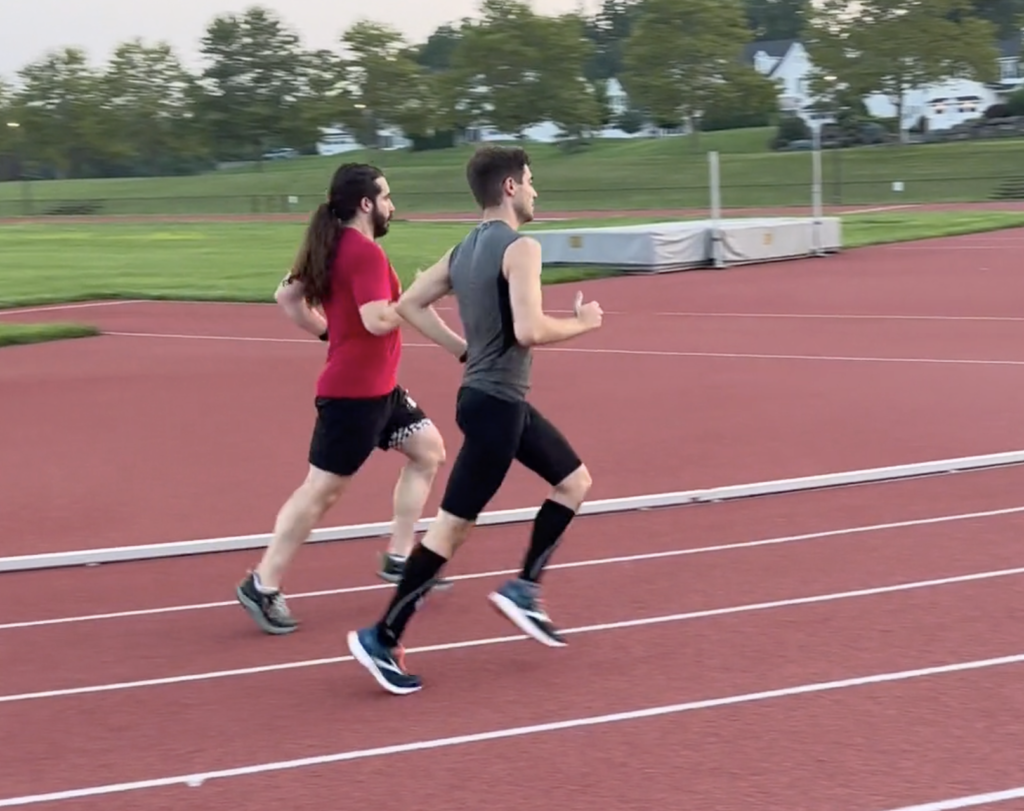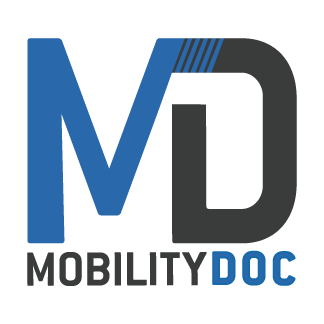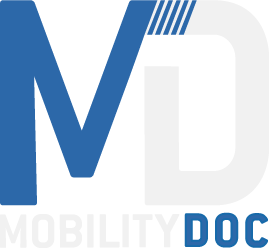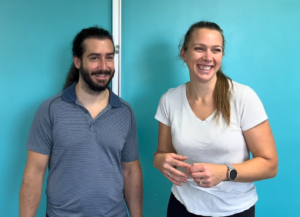Are you a runner who’s been tirelessly trying to strengthen your glutes in hopes of better performance and fewer injuries? If so, you might be surprised to learn that the key to unlocking your potential lies not in brute (glute) strength. For many runners, the misconception that stronger glutes automatically translates to better running mechanics is more common than you’d think. Focusing solely on strength overlooks a critical part of efficient running: the ability to hip hinge. As you head out for a run, do you notice a subtle discomfort in your hips or lower back? These symptoms are often the result of inadequate hip mobility and pelvic stability, rather than outright weakness in the glutes. This week we’ll explore why mobility is important and the perfect hip mobility exercises for runners to improve your hip hinge pattern.
What is Hip Mobility and Pelvic Stability
At Mobility-Doc, hip mobility refers not just to the ability of the hip joint to move freely through its full range of motion, but also how it stabilizes and holds itself. If your hips lack mobility in any sense, your body compensates by using surrounding muscles. This leads to inefficient movement patterns and increased stress on other joints and muscles. The most common movement pattern that gets impacted while running is the hip hinge. Overusing your hip flexors and quads leads to tight glutes. Tightness in your glute prevents your femur head from pushing back into the hip. This inability to move your femur head back is where your hip hinge pattern starts to fail and your running suffers because of it.

Similarly, pelvic stability is essential for maintaining proper alignment and controlling movement during running. If your pelvis can’t stabilize, your body struggles to maintain balance and absorb shock effectively, increasing the risk of injury. This can show up as pain in your hips, glutes, IT band, low back, among other places.
How Will Hip Mobility Exercises Help?
Taking the same step hundreds of thousands of times is ingraining the bad movement patterns further into your body’s memory. These repetitive movements associated with running make imbalances worse causing limitations in the hip joint. If you’re not actively trying to correct these patterns and imbalances it’s going to catch up with you, most likely resulting in injury. That’s why these hip mobility exercises for runners are so important. They’re going to help you re-pattern your stride for smoother easier running!

The Primer
The first step is to incorporate targeted exercises into your training routine. We are focusing on re-teaching your femur to move properly in the hip socket. To get the most benefits, we are doing a primer with all single side exercises. This means that you’re isolating one leg at a time!
 Use a surface that is hip height. Place 1 leg on the table/bench in front of you. In your elevated leg, you want to feel like your femur head is sinking down towards the ground. This is going to stretch your glutes making space for your femur head to move properly in the joint. When you line up your leg on the box, your shin should be parallel to the edge. Having your ankle and your knee in 1 straight line is key to getting the most out of this! Hold on each side for 30 seconds.
Use a surface that is hip height. Place 1 leg on the table/bench in front of you. In your elevated leg, you want to feel like your femur head is sinking down towards the ground. This is going to stretch your glutes making space for your femur head to move properly in the joint. When you line up your leg on the box, your shin should be parallel to the edge. Having your ankle and your knee in 1 straight line is key to getting the most out of this! Hold on each side for 30 seconds.
 Pelvic stability comes not just from your hips but your core. Start on the ground with your heels to your head in 1 line. From here, press into your forearm and the outside of your foot to lift your hips into the air. Engage your abs before lifting your hips into the air. When your hips reach the top squeeze your glutes before lowering down. It’s totally normal for this to feel very different from one side to the other. Do 10 lifts on each side.
Pelvic stability comes not just from your hips but your core. Start on the ground with your heels to your head in 1 line. From here, press into your forearm and the outside of your foot to lift your hips into the air. Engage your abs before lifting your hips into the air. When your hips reach the top squeeze your glutes before lowering down. It’s totally normal for this to feel very different from one side to the other. Do 10 lifts on each side.
 Place one foot behind you around knee height. Keeping your standing knee slightly bent and your hips even, hinge forward. Don’t use your back for this movement. You want to feel your femur head pushing straight back into your hip. This will help you re-pattern and teach your hips to move properly when running. It seems crazy but our bodies forget how to do this over time with tightness! Repeat this 10 times on each foot.
Place one foot behind you around knee height. Keeping your standing knee slightly bent and your hips even, hinge forward. Don’t use your back for this movement. You want to feel your femur head pushing straight back into your hip. This will help you re-pattern and teach your hips to move properly when running. It seems crazy but our bodies forget how to do this over time with tightness! Repeat this 10 times on each foot.
Watch Our 10 Minute Pre-Run Follow Along Video
It’s essential to relearn proper movement patterns and biomechanics to regain full mobility and run pain-free. Doing this primer is the perfect start! We highly recommend doing these hip mobility exercises for runners before every run. If you’re looking to have even faster benefits, work this into your everyday routine running or not.
How Soon Should I See Results
If you’ve been doing this primer pre-run for 3-4 weeks and aren’t seeing any improvements, it might be time to work with a physical therapist or movement specialist to identify and correct any imbalances or weaknesses that are unique to you. (You can always reach out to us!!) I know what you’re thinking… 3-4 weeks?! Yes. You can’t undo thousands of steps in 15 minutes. Real change starts happening in your body after about 3-4 weeks so stay patient and stay consistent! It can be frustrating at times but trust us, it’s worth it in the end. Happy Running!
Dedication Doesn't Mean Pain

Your determination and dedication as a runner is unparalleled to many other sports. You live to run and love how it feels. So why when it starts to hurt do you push through? For the love. It’s an easy answer. Listen to your body before it’s too late. Those nagging pains aren’t just going to go away. Do something to support your running by using MDRx Runner – Strength and Mobility. Over 4 weeks you’ll give your major running muscles the love they need to keep going. Stop injury before it starts. Do what you love longer with MDRx Runner.






